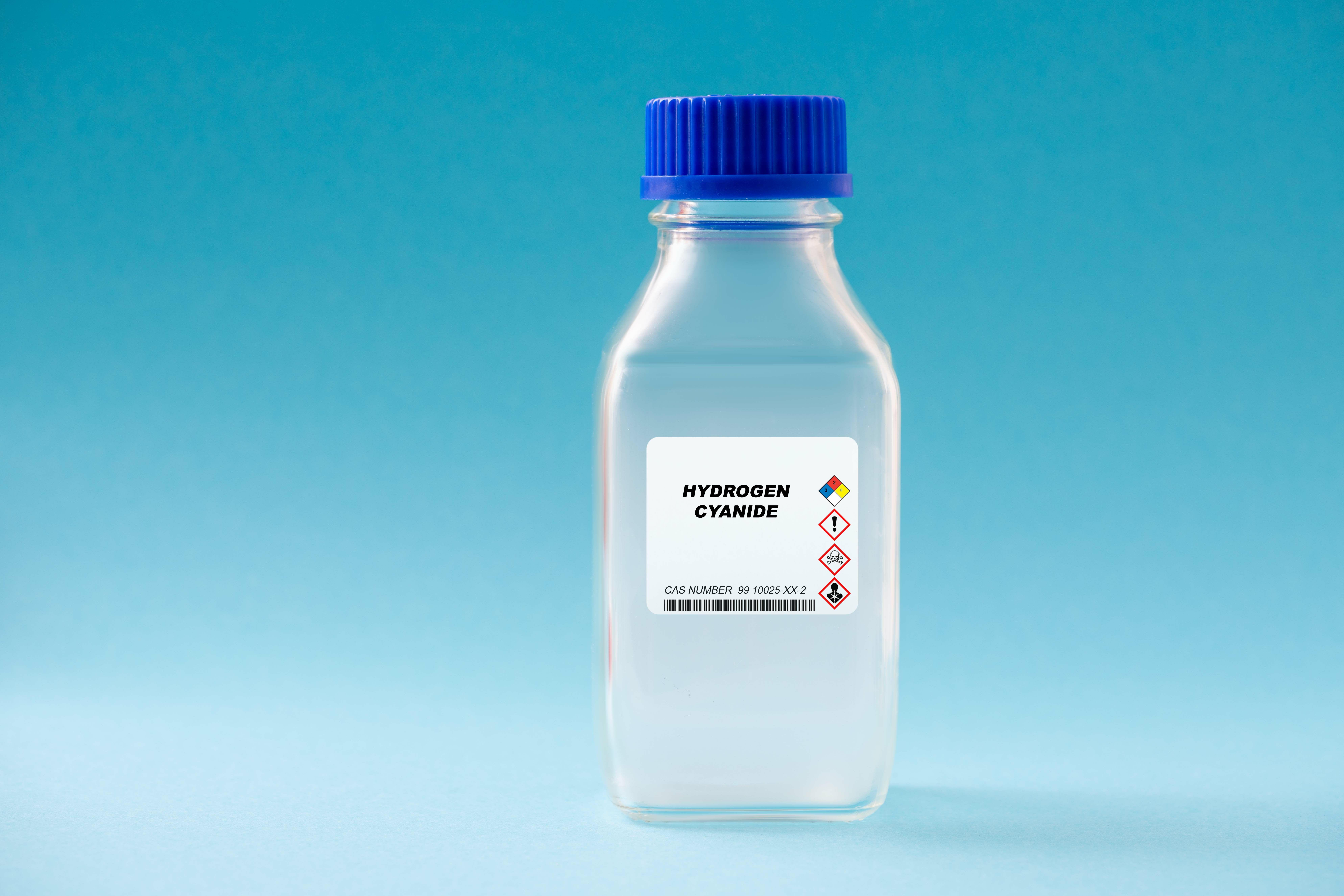Quantifying Cyanide Using Headspace Single-Drop Microextraction
To quantify cyanide in different samples, a group of Brazilian scientists created a detection method based around headspace single-drop microextraction (HS-SDME). Their work was published in Analytica Chimica Acta (1).
Hydrogen Cyanide dangerous poisonous gas in chemical glassware | Image Credit: © luchschenF - stock.adobe.com

Cyanide anion can be produced by certain plants as a defense mechanism against pests, which can lead to its presence being found in foodstuffs, tobacco smoke, and different types of waters. Its highly toxic nature has led to numerous agencies establishing limits for cyanide levels in water. Alongside this, monitoring cyanide levels in biological samples has been deemed critical for obtaining information on peoples’ health, since cyanide can affect the nervous, respiratory, endocrine, and cardiovascular systems. This has led to a need for creating simple, cost-effective, and reliable analytical methods for quantifying cyanide.
For this study, the scientists created a method for this purpose based on analyte volatilization, single-drop microextraction (SDME) using a selective reagent, and colorimetric quantification using a paper-based analytical device. Single-drop microextraction is a sample preparation procedure that eliminates the memory effect for subsequent procedures, as a fresh drop is used for each extraction. An offshoot of this approach, headspace single-drop microextraction (HS-SDME), also provides advantages in this regard, due to its enabling the preconcentration of volatile or volatilized analytes. This makes it possible to use water-soluble solvents and selective reagents to enhance the efficiency of analyte collection through chemical reactions. However, this approach relies on two key factors to be successful: the extraction solution’s effectiveness in capturing the analyte, and the choice of analytical technique for quantification. Regarding the first factor, colorimetric methods applied to paper-based analytical devices is an approach that, according to the scientists, “[presents] a compelling alternative that fulfills the prerequisites of affordability, portability, disposability, and miniaturization” (1). These factors and more led to the scientists using HS-SDME.
For this procedure, 10 mL of a liquid sample was acidified with phosphoric acid, with the generated hydrogen cyanide (HCN) being collected using 3 µL of a palladium dimethylglyoximate solution (Pd (DMG)22−), which was positioned in the flask headspace using a syringe. Pd(CN)42− was then formed, in addition to the organic ligand being demasked. After 15 minutes of extraction time, the reagent drop was added to a paper-based analytical device containing 3 µL of nickel chloride, creating nickel (II) dimethylglyoximate. After this, digital images were captured.
Under these conditions, the method showed a suitable linear relationship (r2 > 0.99) ranging from 26 to 286 μg/L and a limit of detection of 5 μg/L. The approach offered high sensitivity and selectivity, all while only needing a small volume of reagents. This encouraged the scientists, leading them to believe the method “exhibits a high degree of portability for in-situ applications” (1).
Reference
(1) Conrado, J. A. M.; Araújo, D. A. G.; Petruci, J. F. d. S. Combination of Headspace Single-Drop Microextraction (HS-SDME) with a Nickel-Embedded Paper-Based Analytical Device for Cyanide Quantification. Anal. Chim. Acta 2023, 1281, 341882. DOI: https://doi.org/10.1016/j.aca.2023.341882
Detecting Nitro-PAHs in Aquatic Environments Using Solid-Phase Microextraction
January 28th 2025Scientists from Nanjing University recently developed a new solid-phase microextraction (SPME)-based system for detecting nitrated polycyclic aromatic hydrocarbons (nitro-PAHs) in aquatic environments.
New Study Uses MSPE with GC–MS to Analyze PFCAs in Water
January 20th 2025Scientists from the China University of Sciences combined magnetic solid-phase extraction (MSPE) with gas chromatography–mass spectrometry (GC–MS) to analyze perfluoro carboxylic acids (PFCAs) in different water environments.
